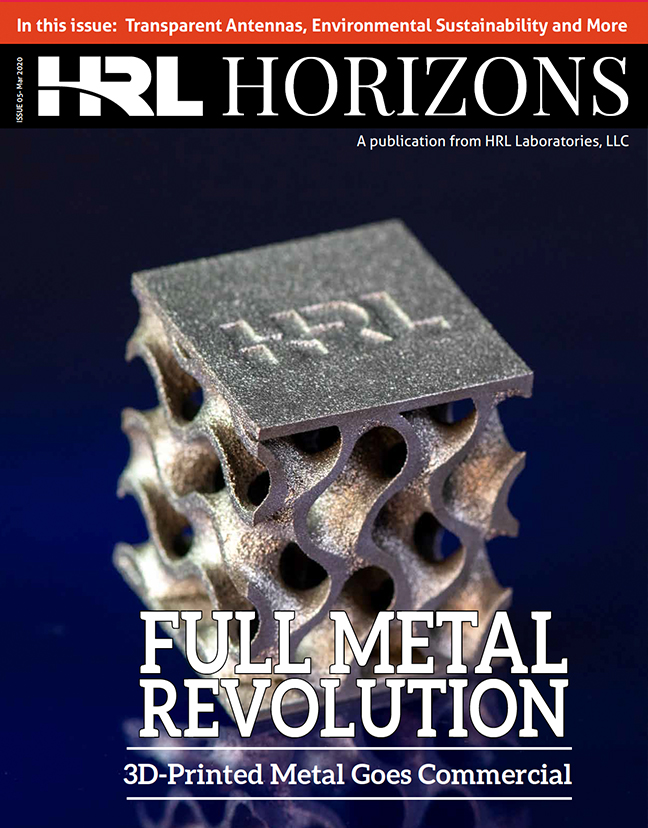
HRL Team Receives DARPA Award to Develop Magnetic Integrated Components

Florian Herrault, Shanying Cui, Adam Gross. © 2017 HRL Laboratories.
HRL Laboratories, LLC, has received an award from the Defense Advanced Research Project Agency (DARPA) under the Magnetic, Miniaturized, and Monolithically Integrated Components (M3IC) program. This collaboration originates from DARPA’s Microsystems Technology Office (MTO) to develop new materials, designs, and devices to make electronics smaller and more efficient, specifically with radio frequency (RF) magnetic materials.
HRL is developing and scaling up its unique Large Area Nanoferrite Assembly (LANA) technology that enables monolithic integration of magnetic devices using room-temperature, IC-compatible particle deposition onto wafers of any size or semiconductor material, including silicon or gallium nitride. HRL is performing hexaferrite nanoparticle synthesis and subsequent assembly of these nanoparticles to produce magnetic components on wafers.
“Through this program we hope to advance the state of the art of these materials along with demonstrating integration approaches on microwave-integrated circuit wafers,” said Florian Herrault from HRL’s Microelectronics Laboratory, program manager on the project. “By combining millimeter wave and magnetic materials with monolithic integration, the resulting circuitry will enable faster production, more compact subsystems, and dramatically lower cost for Department of Defense uses.”
“Our approach combines a binder-free nanoparticle assembly process with traditional patterning techniques on semiconductor wafers,” said Shanying Cui of HRL’s Sensors and Materials Laboratory, lead scientist on nanoassembly for the project. “The typical way would be to grow magnetic material using epitaxy, which is very challenging for thick films and large wafer processes.”
“We synthesize nanoparticles in specific shapes to produce high packing density when assembled and thus high magnetic performance,” said Adam Gross, also of HRL’s Sensors and Materials Laboratory and lead scientist on the nanoparticle synthesis aspect of the project.
One possibility for M3IC technology is a device called a circulator that combines simultaneous radio transmission and reception in a single antenna—serving both functions—instead of having a separate antenna for each. Such a device would be more efficient and dramatically smaller than existing units.
In current monolithic microwave integrated circuit technology, magnetic material has not been used because it was too hard to integrate and achieve the necessary thickness and scale. With the M3IC program, the HRL team hopes to break these technological barriers and open a new design space in RF subsystem designs.
HRL Laboratories, LLC, Malibu, California (hrl.com) is a corporate research-and-development laboratory owned by The Boeing Company and General Motors specializing in research into sensors and materials, information and systems sciences, applied electromagnetics, and microelectronics. HRL provides custom research and development and performs additional R&D contract services for its LLC member companies, the U.S. government, and other commercial companies.
Media Inquiries: media[at]hrl.com, (310) 317-5000

